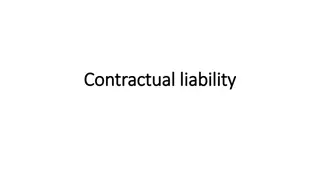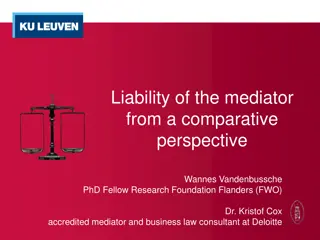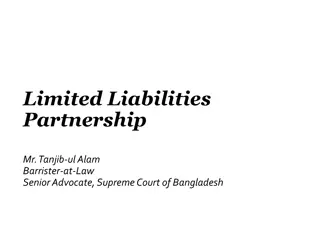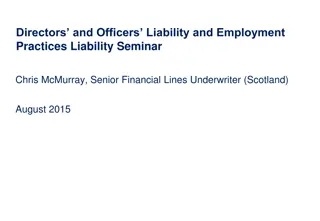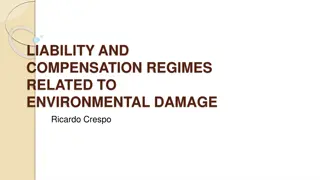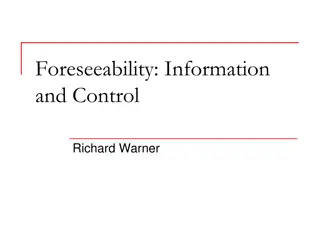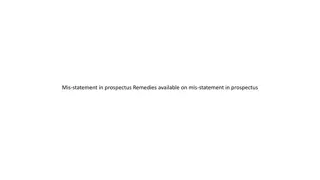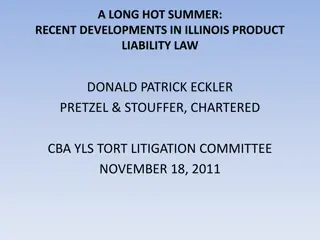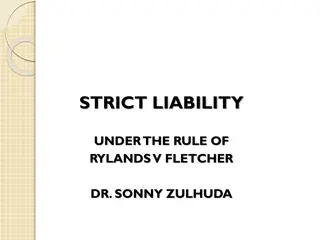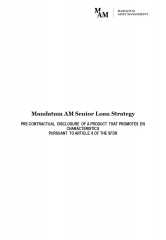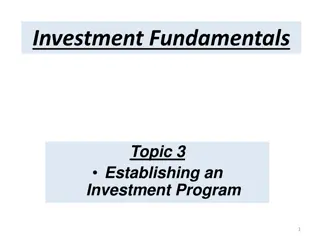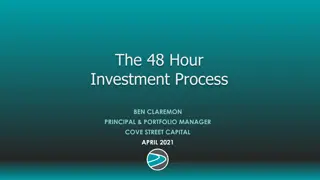Challenges and Concerns in Liability-Driven Investment (LDI) Strategies
The article discusses the challenges in LDI strategies, particularly focusing on Leveraged LDI and its impact on pension schemes. It highlights the role of Bank of England intervention, concerns about gilt market integrity, and regulatory frameworks related to derivative instruments. The limitations and consequences of LDI strategies, such as risk hedging and valuation methods, are also explored.
Download Presentation

Please find below an Image/Link to download the presentation.
The content on the website is provided AS IS for your information and personal use only. It may not be sold, licensed, or shared on other websites without obtaining consent from the author. Download presentation by click this link. If you encounter any issues during the download, it is possible that the publisher has removed the file from their server.
E N D
Presentation Transcript
LDI & The Gilt Market LDI & The Gilt Market Some Concerns Some Concerns Never in the field of accounting standards, actuarial theory and Pensions Regulator practice has an unelected and unaccountable few destroyed so much value for so many pension scheme members Con Keating London 2022 con.keating@brightonrockgroup.co.uk
Bank Of England Intervention The press has presented the motivation of the Bank as being to protect pension funds It was not the concern was with gilt market integrity The purpose of these purchases will be to restore orderly market conditions. Creating any form of quasi-permanent backstop fund will not work That is simply granting a form of free put option to any market participant The trigger for this turmoil was external - political and economic The meltdown occurred because that exogenous shock fed into the endogenous feedback spiral of liability driven investment. Unless resolved, it will recur. The only resolution which certainly works is elimination of these strategies from the marketplace
What is LDI? It is the matching of perceived risks among and between assets and liabilities. It comes in two forms: LDI and Leveraged LDI Leveraged LDI has been the cause of the meltdown The effective borrowing within repo and derivatives contracts has resulted in collateral calls And distressed sales of assets to meet them. These contracts have caused real losses to schemes. More importantly they have disrupted the gilt market TPR has been zealously promoting the use of LDI There is a problem with leveraged LDI functionally schemes are borrowing
The Law - Derivatives IORP II Art 19 (e) investment in derivative instruments shall be possible insofar as such instruments contribute to a reduction in investment risks or facilitate efficient portfolio management. Occupational Pension Schemes (Investment) Regulations (2005) (8) Investment in derivative instruments may be made only in so far as they (a) contribute to a reduction of risks; or (b) facilitate efficient portfolio management (including the reduction of cost or the generation of additional capital or income with an acceptable level of risk), and any such investment must be made and managed so as to avoid excessive risk exposure to a single counterparty and to other derivative operations.
What are the consequences? The limitation to investment risks means that the risks embedded in liabilities cannot be hedged using derivatives Inflation Longevity Scheme Optionality These risks may be hedged by non-derivative assets eg insurance policies Interest (Discount) rate risk is perceived but not real. Investment risks such as the foreign exchange exposures of overseas equities may be hedged using derivatives. There is no correlation between gilt yields and DB liabilities. There is a strong correlation between gilt yields and DB valuation methods. This tells us that the valuation methods are not fit for purpose.
Hedging the discount rate Interest rates (Discount rates) do not figure in the determination of the pensions ultimately payable by a scheme. This risk is perceived but not real These rates merely determine a present value for those projected benefits The natural rate of scheme funding or amortisation is the rate of growth required of the contribution to meet those projected values (CAR). This rate may be modified by the experience of the various factors which determine the amounts of those benefit projections where that varies from the original assumptions. Even hedging using conventional gilts actually introduces a dependency, a risk, on the performance of gilts (interest rates) into the scheme. Schemes will gain when rates decline and lose when they rise.
The Law - Borrowing Borrowing IORP II, Art 19 The home Member State shall prohibit IORPs from borrowing or acting as a guarantor on behalf of third parties. However, Member States may authorise IORPs to carry out some borrowing onlyfor liquidity purposes and on a temporary basis. The Occupational Pension Schemes (Investment) Regulations 2005 (OPS, 2005) Borrowing and guarantees by trustees 5. (1) Except as provided in paragraph (2), the trustees of a trust scheme, and a fund manager to whom any discretion has been delegated under section 34 of the 1995 Act, must not borrow money or act as a guarantor in respect of the obligations of another person where the borrowing is liable to be repaid, or liability under a guarantee is liable to be satisfied, out of the assets of the scheme. (2) Paragraph (1) does not preclude borrowing made only for the purpose of providing liquidity for the scheme and on a temporary basis.
Borrowing Borrowing Repo Economically this is secured borrowing. It effectively subordinates the interests of scheme members It has been widely utilised in the financing of long positions in conventional and index linked gilts-edged securities. The repurchase leg clearly satisfies the statute implied test of borrowing - of repayment from the scheme s assets. Schemes have been borrowing for long terms and in amounts far in excess of their liquidity needs USS 4-5 times annual pension payments and proposing to raise this to around 10-12 times. ICMA - the principal use of repo is in fact the secured borrowing and lending of cash. Repo financing has been used by Federal Reserve banks to provide credit to member banks since 1917 But TPR baldly states: We understand that repo financing is structured as a sale and future repurchase of an asset and, as such, would not amount to borrowing for the purposes of the Investment Regulations.
Are Repos Derivatives ? Are Repos Derivatives ? No mainstream finance texts make this claim We found just one paper supporting this concept ( Is the repo a derivative? A.P.Faure, Rhodes University, June 2011) EMIR: A derivative is a financial contract linked to the fluctuation in the price of an underlying asset or a basket of assets. However, we would note that repos are not derivatives of the underlying securities But rather operations on those securities, (their sale and purchase) For the purpose of borrowing money. But, in the Investment Risk Appendix to the (PPF) Board s Determination under Section 175(5) of the Act: 30. Gilt derivatives include gilt repos,
The legal risks of LDI The legal risks of LDI Schemes are borrowing, heavily Schemes are hedging liabilities with derivatives Schemes are hedging illusory risks (discount rates) with derivatives Schemes are buying assets which increase the cost of pension provision. It is the borrowing and derivatives contracts which have generated the collateral calls And with that distressed selling of securities At a scale that disrupted the gilt market Trustees should be aware of the risks And so too should be LDI managers And TPR must explain why it is encouraging this and not enforcing the law.
Balance Sheet Before Assets 50 50 50 150 After Leverage Effects Liabilities 100 50 Assets 50 35 35 120 Liabilities 100 50 Growth Bonds More Bonds Pensions Debts Growth Bonds More Bonds Pensions Debts 150 150 Leverage Funding 1.5x 100% Leverage Funding 1.76x 70% The loss unleveraged would have been 15 not 30 The Funding Ratio 85% not 70% After application of the higher discount rate, liabilities fall to 70 The levered scheme is in balance, funding 100%. But the unlevered fund would be 121% funded.


